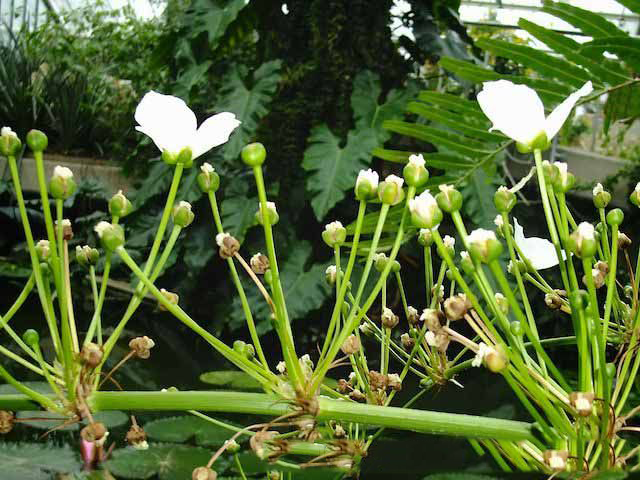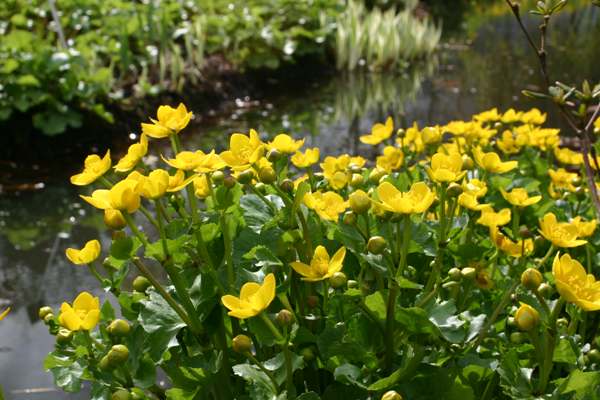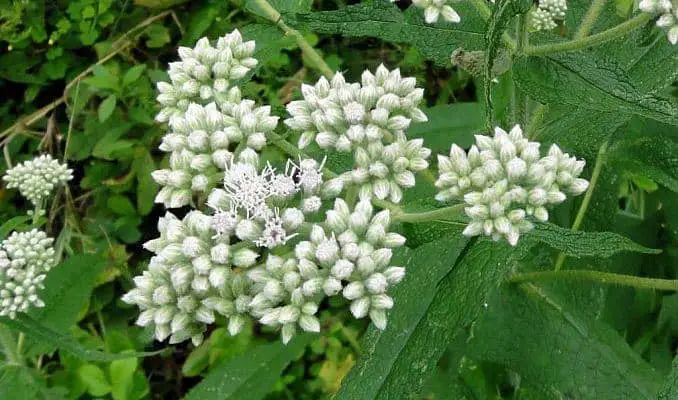Hopefully, I don’t jinx us but it looks like long-awaited spring has finally come to the Adirondack mountains of New York. The snow is leaving and I’ve already seen an assortment of green shoots starting to pop up through last year’s leaves in the woods.
The Adirondacks host a variety of plants that have been used for centuries for their medicinal properties. Whether you find them in the wild or decide to create your own natural first aid kit at home, I thought I would share just 10 of the many plants found locally that can assist you in a variety of ailments.
1) Water Plantain – Alisma subcordatum

Uses: Tea can be used as a diuretic, and for kidney stones and urinary diseases. Fresh leaves can be used as a rubefacient – they redden and irritate the skin.
History of Use: American Indians used root poultice for bruises, swellings, and wounds. An 1899 article by a California physician reported on the use of the root tincture (alcohol extract), mixed with equal parts water, and glycerin, as an application to the nostrils to treat “nasal catarrh”.
The root of the closely related A. Plantago-aquatica is used in China for diuretic qualities for dysuria, edema, distention, diarrhea, and other ailments; their studies had verified the plant’s diuretic action. In laboratory experiments with animals, the herb lowers blood pressure, reduces blood glucose levels, and inhibits the storage of fat in the liver.
2) Jack in the Pulpit – Arisaema triphyllum

History of Use: Native Americans used the dried, aged root for colds and dry coughs, and to build blood. Externally, the root was poulticed for rheumatism, scrofulous sores, boils, abscesses, and ringworm.
Dried root tea was used as an expectorant, diaphoretic, and purgative, and for asthma, bronchitis, colds, cough, laryngitis, and headaches. Externally, for rheumatism, boils, and swelling from snakebites. The Chinese used related species to treat snakebites.
Warning: Intensely irritating. Calcium oxalate crystals found in the whole fresh herb.
3) Yellow Marsh Marigold – Caltha palustris

Uses: Root tea induces sweating, emetic, and expectorant while leaf tea can be used as a diuretic or laxative.
History of Use: Ojibwas mixed tea with maple sugar to make a cough syrup that was popular with colonists; this syrup was used as a folk antidote to snake venom. The plant contains anemonin and protoanemonin – both have marginal antitumor activity.
Warning: All parts may irritate and blister skin or mucous membranes. Sniffing bruised stems induced sneezing. Intoxication has resulted from the use of the raw leaves in salads or using the raw flower buds as substitutes for capers. Do not confuse with American White or False Hellebore, which is toxic.
4) Roundleaf Sundew – Drosera rotundifolia

History of Use: Traditionally, tea or tincture was used for dry, spasmodic coughs, asthma, arteriosclerosis, chronic bronchitis, and also as an aphrodisiac. The poultice or plant juice was used on corns and warts. Europeans regard the extracts and tinctures as antitussive and spasmolytic.
Because of their protein-digesting enzymes, exudates from the leaves have been used to treat warts. The plant contains proteolytic enzymes and plumbagin, which are antibiotic against certain bacteria.
Sundew is a protected plant in New York, so unless it’s on your property or the property owner grants permission, you shouldn’t pick it per DEC. N.Y.S. protected plants
5) Boneset – Eupatorium perfoliatum

History of Use: Leaf tea was once used to induce sweating in fevers, flu, and colds; also used for malaria, rheumatism, muscular pains, spasms, pneumonia, pleurisy, gout, etc. Leaves were poulticed onto tumors. West German research suggests nonspecific immune system-stimulating properties, perhaps vindicating historical use in flu epidemics.
Warning: Emetic and laxative in large doses. May contain controversial and potentially liver-harming pyrrolizidine alkaloids.
6) Jewelweed – Impatiens capensis

Uses: Crushed leaves or mucilaginous stem juice that is harvested before flowering can be applied to recent poison-ivy rash. A 1957 study found it effective, in 2-3 days, in treating 108 of 115 patients. Some people swear by the leaf tea as a poison-ivy rash preventative; others rub on the frozen tea, in the form of ice cubes, as a remedy. The poultice is also a folk remedy for bruises, burns, cuts, eczema, insect bites, sores, sprains, warts, and ringworm.
7) Blue Flag – Iris versicolor

History of Use: Native Americans used the root poultice on swellings, sores, bruises, rheumatism, and as an analgesic agent. Internally, the root tea was used as a strong laxative, emetic, and to stimulate bile flow. Physicians formerly used the root in small, frequent doses to “cleanse” blood and stimulate the bowels, kidney, and liver. Homeopathically used for migraines and as a cathartic, diuretic, and emetic.
Warning: Considered poisonous
8) White Water Lily – Nymphaea odorata

History of Use: Native Americans used the root tea for coughs, tuberculosis, inflamed glands, mouth sores, to stop bleeding, and bowel complaints; poulticed root for swellings. In folk tradition, a mixture of root and lemon juice was used to remove freckles and pimples.
Warning: Large doses may be toxic.
9) Broadleaf Arrowhead – Sagittaria latifolia

History of Use: Native Americans ate the tubers like potatoes or used them in a tea for indigestion or poulticed them for wounds and sores. Leaf tea was used for rheumatism and to wash babies with fever, and was poulticed to stop milk production.
Warning: Arrowheads (not necessarily this species) may cause dermatitis, Do not confuse with Water Arum (Calla palustris L.).
10) Wide Leaved Cattail – Typha latifolia

History of Use: Native Americans poulticed the pounded roots on wounds, sores, boils, carbuncles, inflammations, burns, and scalds. Fuzz from mature female flowerheads was applied to scalds, burns, and to prevent chafing in babies. Young flowerheads and root infused in milk were eaten for diarrhea. Pulp can be converted to rayon. Root tea of Narrowleaf Cattail (T. angustifolia) has been used for kidney stones.
Warning: Cattail is suspected of being poisonous to grazing animals.
These are just 10 of the hundreds of plants found in the Adirondacks of New York that can be used for medicinal purposes. If you have ever spent any time in the outdoors, I’m pretty sure you’ve seen them. Most of the plants I listed above are found in wetlands or around bodies of water.
I think it’s a good idea to familiarize yourself with your surroundings, wherever you’re located. You might not need to run out and make some tea out of water lilies right away but it’s good to know you can if the need arises and there aren’t any alternatives readily available for whatever reason. Enjoy your time in nature.
Source: http://edibleandmedicinalplants.weebly.com/medicinal.html

